- JAPANESE
- LANGUAGE
X
 THAT IS GOOD
THAT IS GOOD
Following on from the previous article, here is a report on my trip to Hokkaido.
I wake up to a still dreamy view of the Shiretoko mountain range across Nemuro Bay. Today I will enjoy the Notsuke-Furen Prefectural Natural Park. It stretches across Nemuro City, Betsukai Town, and Shibetsu Town on the Nemuro Straits side of the eastern tip of Hokkaido. It is a vast nature park with an area of 11,692 hectares, divided into two areas: the Notsuke-Peninsula area and the Furen area.

Let’s start with the Furen area. As soon as you drive along Nemuro Bay, you will come to Shunkunitai. Its name comes from the Ainu word “sunkunitai” , which means ezo pine and forest. It is a sandbar that separates Nemuro Bay from Lake Furen. It has the lowest temperature index in Japan, and due to the influence of ocean currents, sea fog tends to form and it has a unique landscape even in Hokkaido, which has a subarctic humid climate.

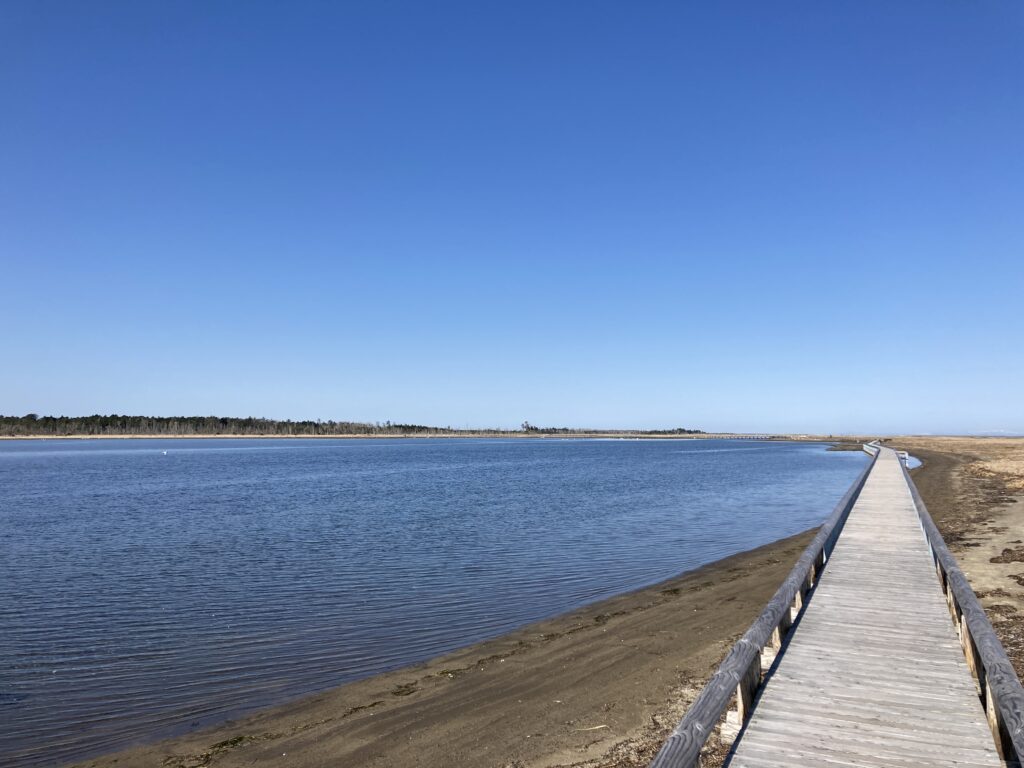
Many bird species, including swans, gather there. Some of them are about to start their spring migration. They seem to be enjoying the arrival of spring.
And after that, I decided to casually drop by a place where there was nothing but a peninsula jutting out into Lake Furen, marked on the map as Yarimukashi.
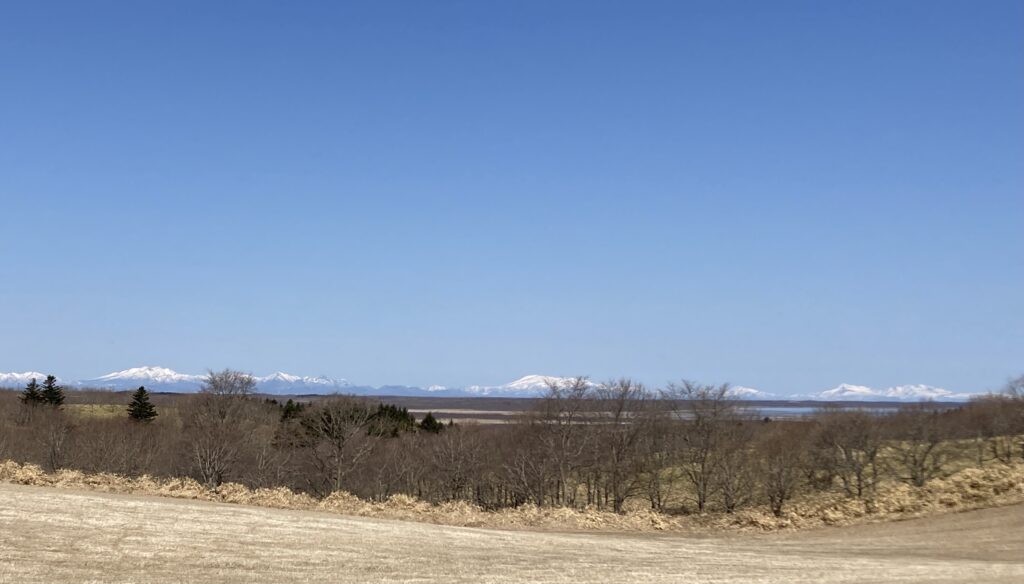
Maybe it was a matter of timing, but this place was kind of great.
A waveless morning on a clear sunny morning. Silence. Birds chirping and the sound of the wind. The wind waves wet the shore and make a quiet sound.
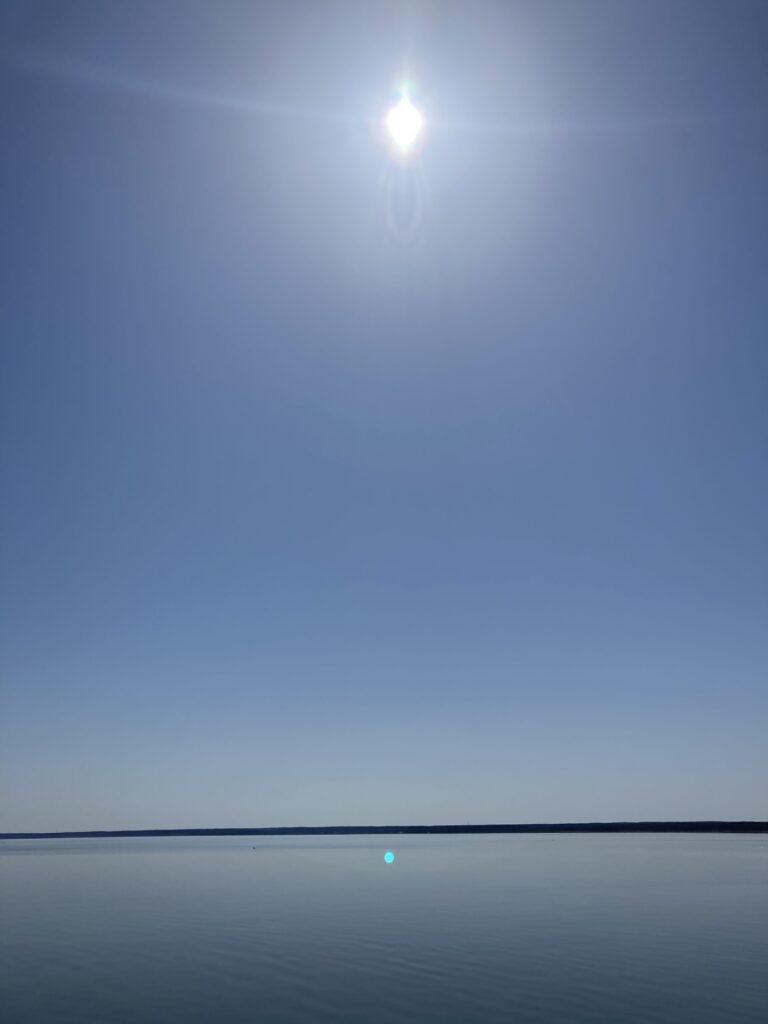
60% of the human body is water.
The moment I stopped this place, my body is linked to the wavelength of the water here, and I am surrounded by silence. That’s how I feel.
It’s as if I am detached from the sense of time.
It’s a feeling as if time doesn’t exist unless the birds are chirping.
I wonder how long I was there.
I just stayed there for a while and just I surrendered myself.
Then I headed north again with beautiful views of the nearby Kunashiri Island and the Shiretoko Mountain Range.
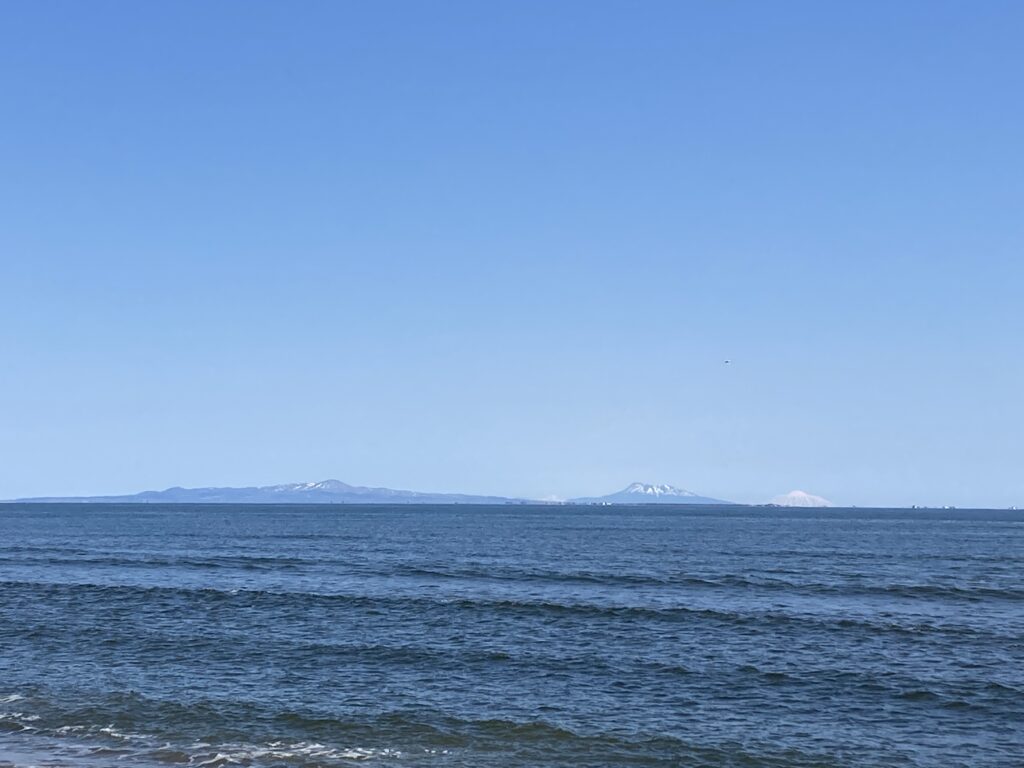
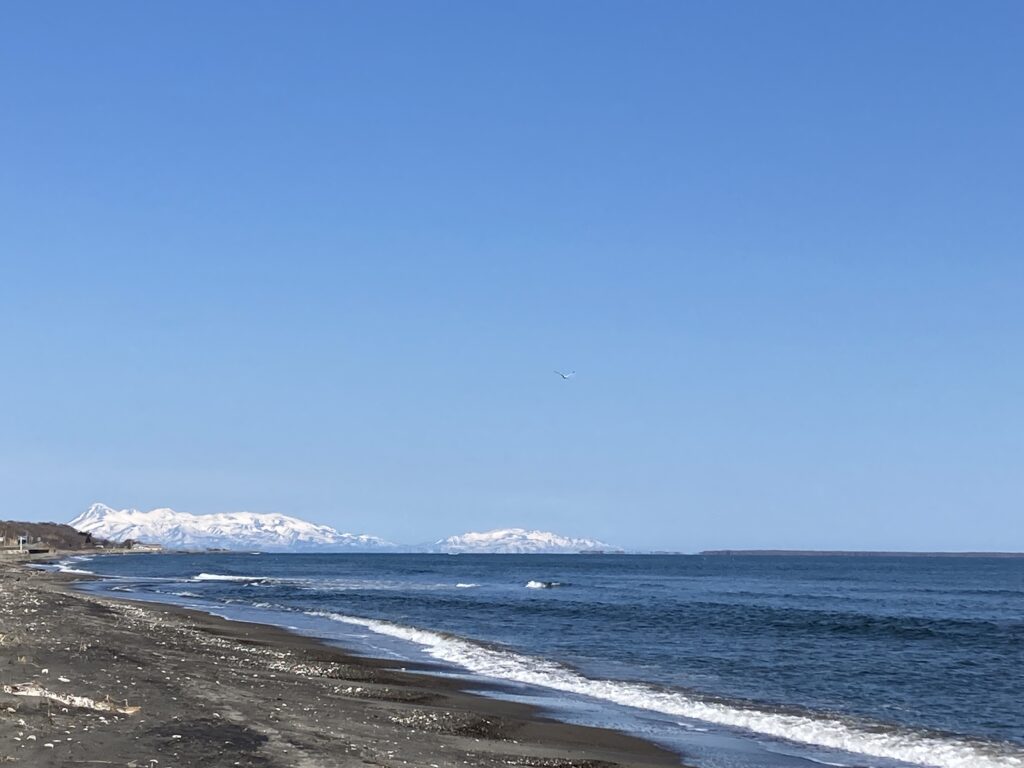
Then I entered the Notsuke area.
I arrived at the base of the Notsuke Peninsula, which I wanted to visit.
The Notsuke-Peninsula is Japan’s largest sand spit (a beak-shaped landform formed by the accumulation of drifting sand), with a total length of 28 km, and juts out toward the Nemuro Straits. In winter, there is so much ice that you can see the “ice horizon” instead of the horizon. Such a place. This place was also wonderful.
I think I’ll go to the end of the peninsula first, and then go back and take a walk.
As I was driving along, I was surprised to find myself in the middle of such an open landscape…
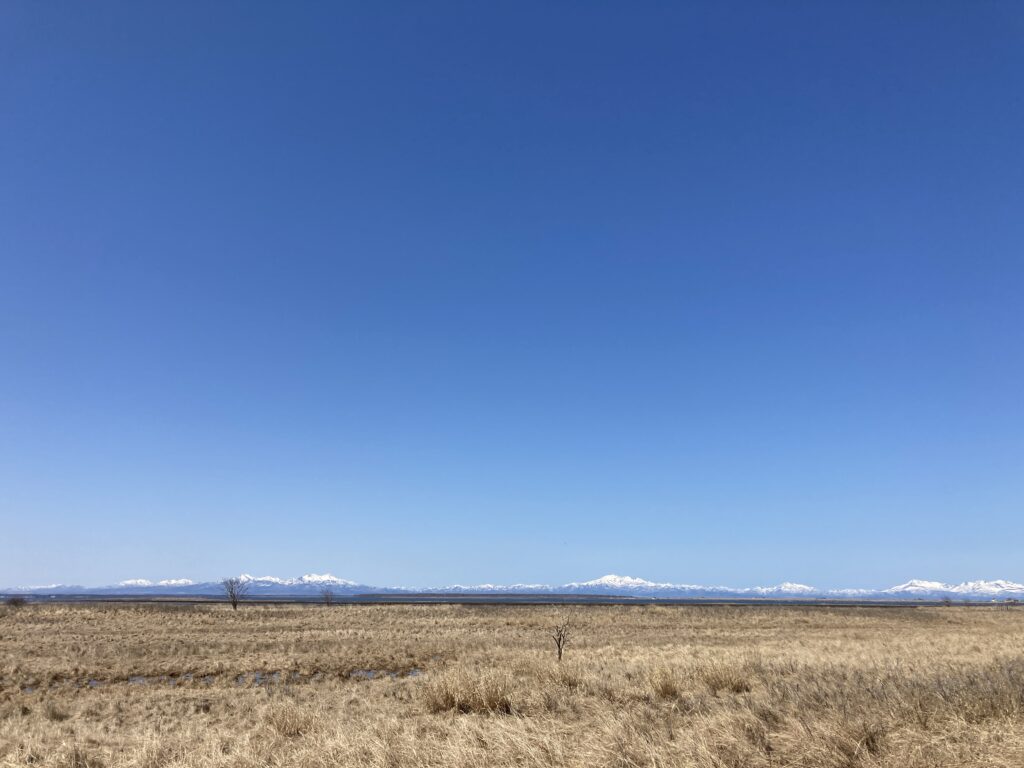
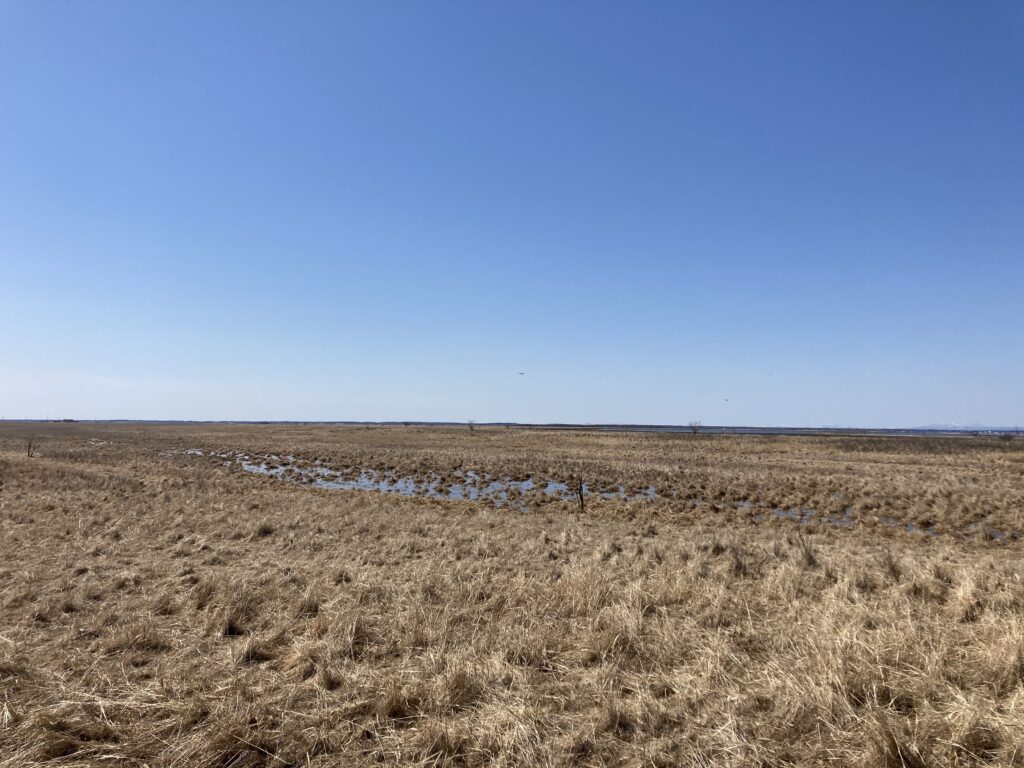
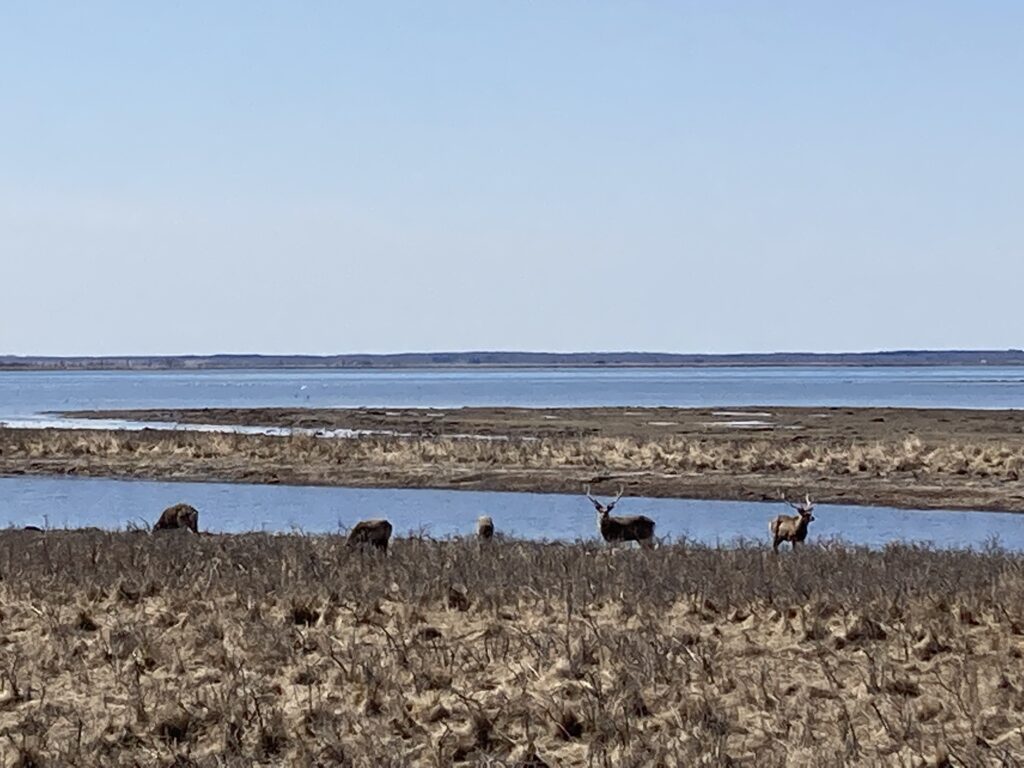
The workings of life have been repeated throughout the ages.
A lump of life, shaped by the soul, living in nature.
Only the occasional soft breeze creates a gentle sound.
In such silence, the stags’ figures were beating with the force of their lives.
Their echoes seemed to penetrate the air and make my heart tremble.
I stood there for a while, unable to move.
Kunashiri Island is also quite close from here.
Mt. Tomari, Mt. Rausu, and Mt. Chachadake are clearly visible. I’d like to go skiing on Mt.Chachadake one day.
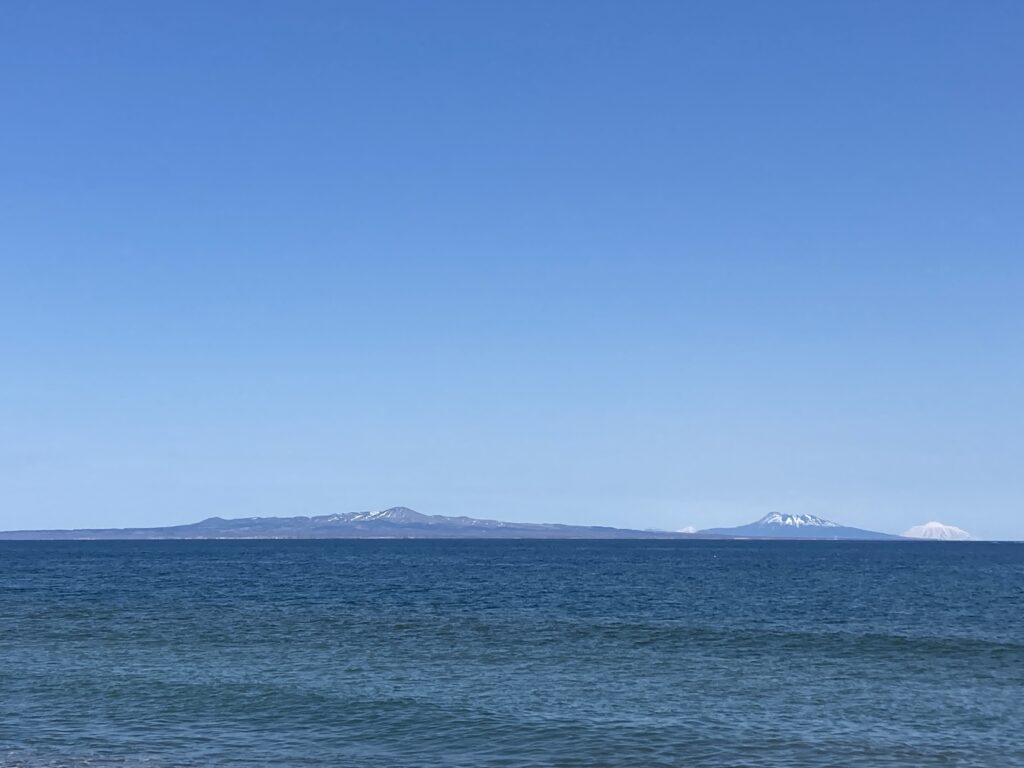
With this in mind, I took a walk around Todowara.
Todowara is a place where forests eroded by seawater have died out and Abies sachalinensis remains.
In fact, this place is said to be sinking and will eventually disappear.
Another one nearby is called Narawara.
What’s there is nothing.
But in such a place, there is everything that shakes people’s instinctive emotion.
I really like such places.
That’s why I really like the East Hokkaido. This is the frontier of Japan.
Once I’ve enjoyed it to the point where it’s firmly etched in your mind, this time, I drove inland and crossed over the Kompoku Pass to Shari.
I’ve been to this area many times before.
The beautiful mountains of Shari.
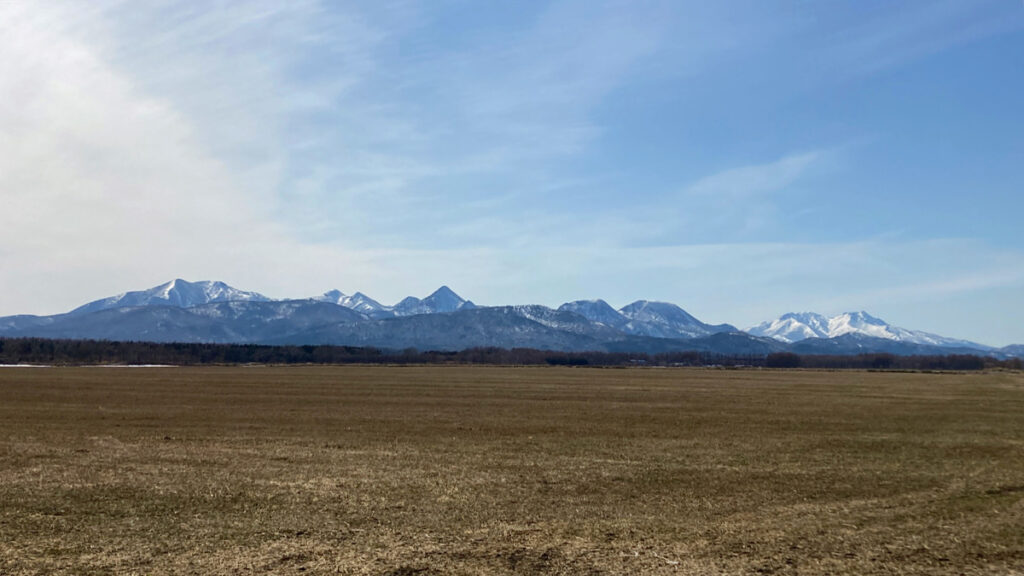
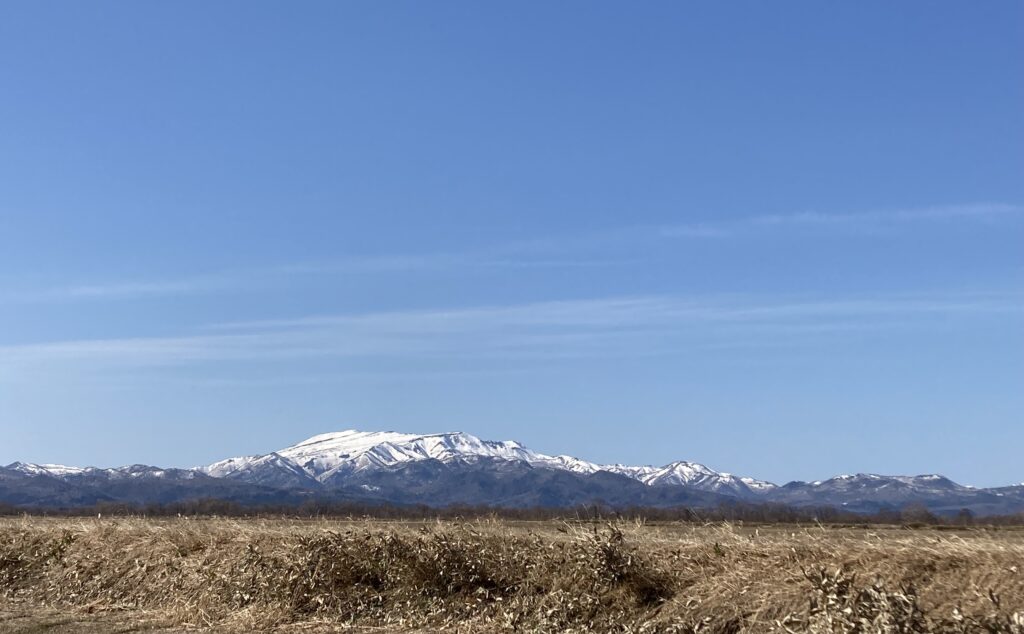
Mt. Shari seen from Shari town over the Kompoku Pass.
It’s really exceptionally cool.
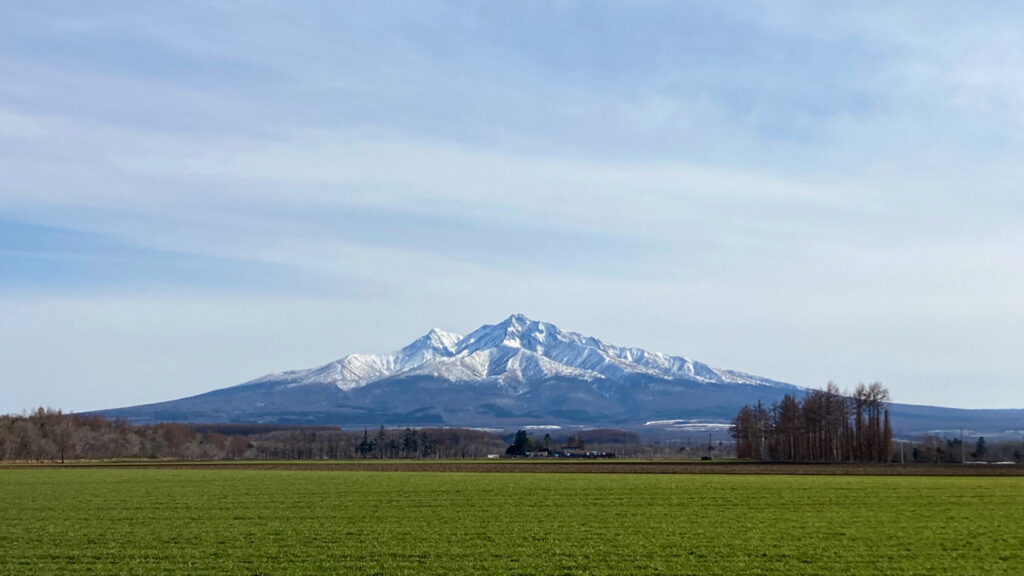
I had thought that I might go as far as Shari that day, but there was still time before sunset, so I decided to go to Abashiri. From here, I could see the Sea of Okhotsk. The view of the Shiretoko Peninsula I had been looking at so far changed to the view from the north.
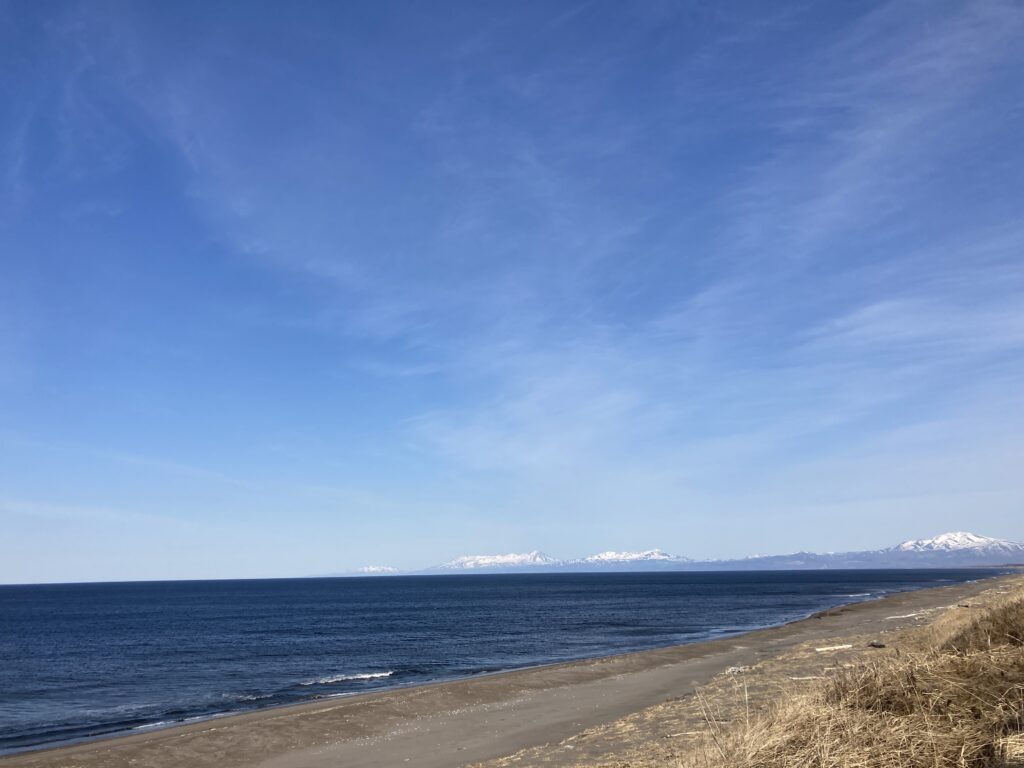
It was already sunset when I arrived in Abashiri. I headed to a hot spring beside Lake Abashiri. After the hot spring, the sun was just setting.
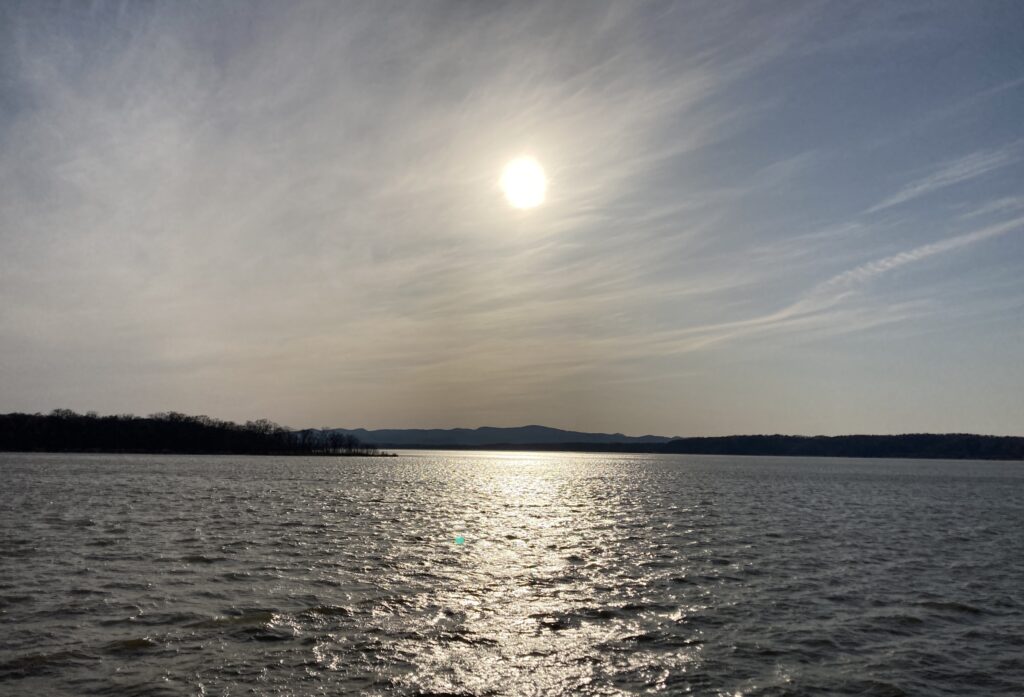
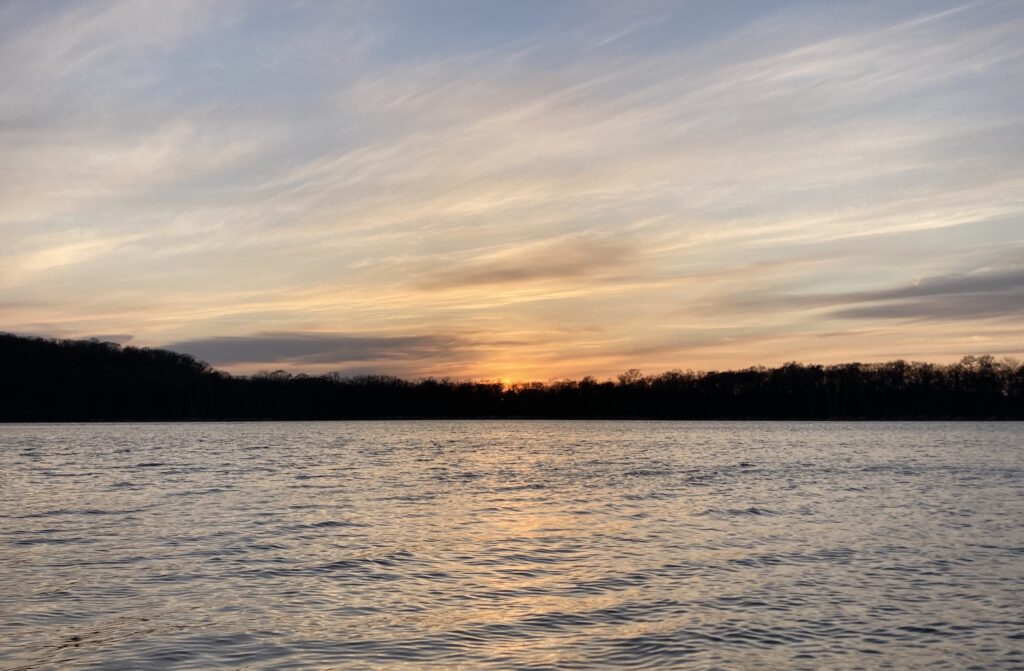
Following the rule of “don’t move after dark to enjoy the scenery”, I finished the day here.
Hokkaido is truly beautiful.
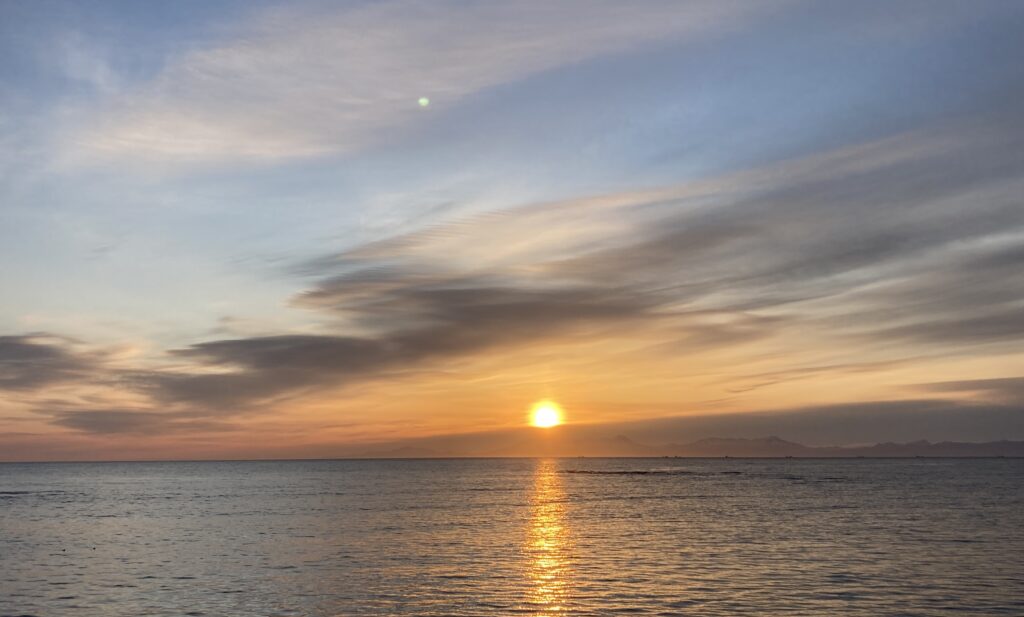
When I woke up at the roadside station, it was just the morning glow. I set off in search of the sunrise. The beautiful sun rises again today, gradually heating up the air. The beginning of the day.
I wish I could spend this time at Cape Noto, so I hurried the car towards there. On the way to Cape Noto, I was nervous a few times when a deer jumped out of the road, but I reached there.
The fishermen’s boats go out to sea. Migratory birds fly in formation. And the sun rises quietly.
After enjoying the first hours of the day in this place until the surroundings are well-lit, I turn around Lake Noto and head back to the sea. Then I head for Lake Saroma.
On the way, I saw a large white-tailed eagle perched on a nearby tree, and I stopped the car as well.
A rare species of wild animal and plant in Japan, the white-tailed eagle is on the Red List of Threatened Species II (VU).
There was a nest there. There was another bird inside. A mating pair. Spring. I imagine that new life is being nurtured there.
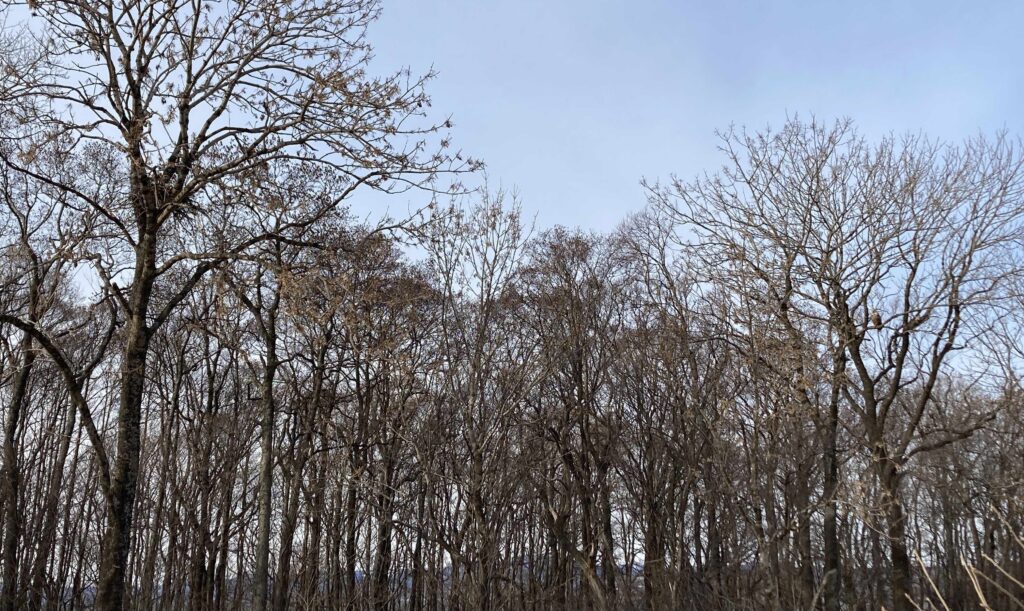
Soon I arrived at Lake Saroma, the third largest lake in Japan, the largest lake in Hokkaido, and the largest brackish water lake in Japan. I went all the way around here, too. I stopped by Cape Kimuaneppu and Ryugu-dai, the tip of the western side (Yubetsu-cho side), and that was the end of my trip along the Sea of Okhotsk this time.
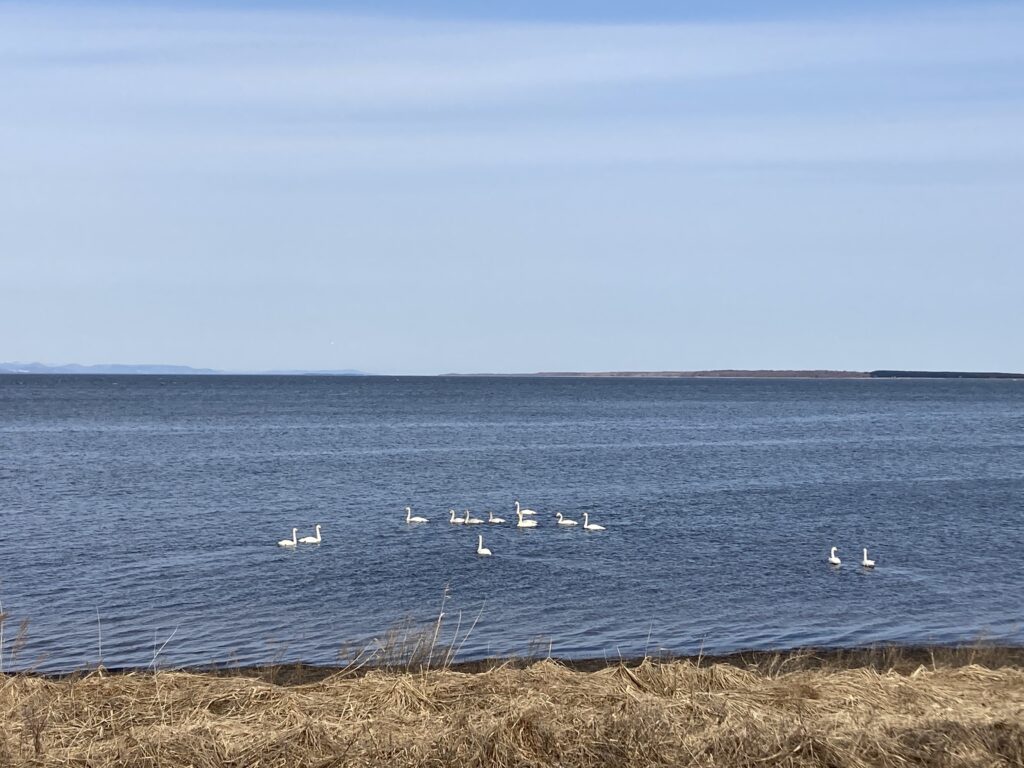
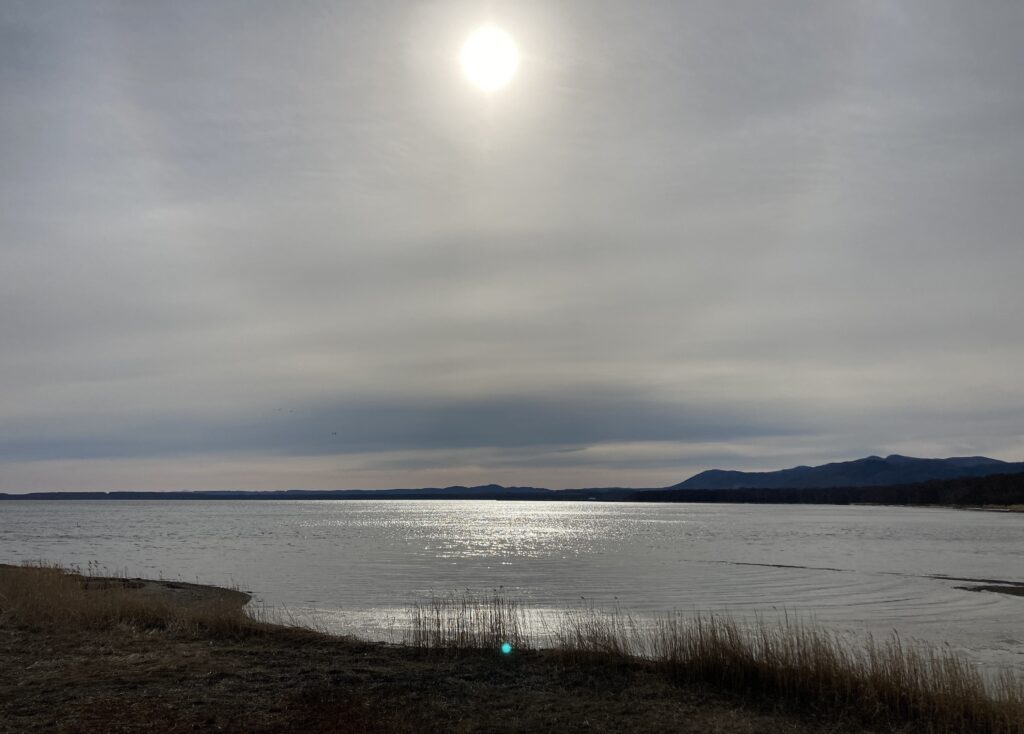
Since I have already traveled along the north coast from here, I will turn my head inland to the mountainous area in the center of Hokkaido, passing through Yubetsu and entering Engaru. As I approached the mountains, the rivers were flowing briskly due to melting snow. On the way, I saw the mountains of northern Daisetsu and took a detour down the road to Kamikawa town.
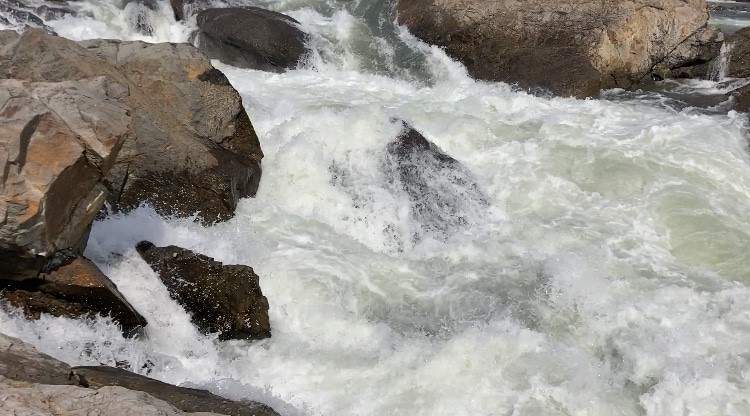
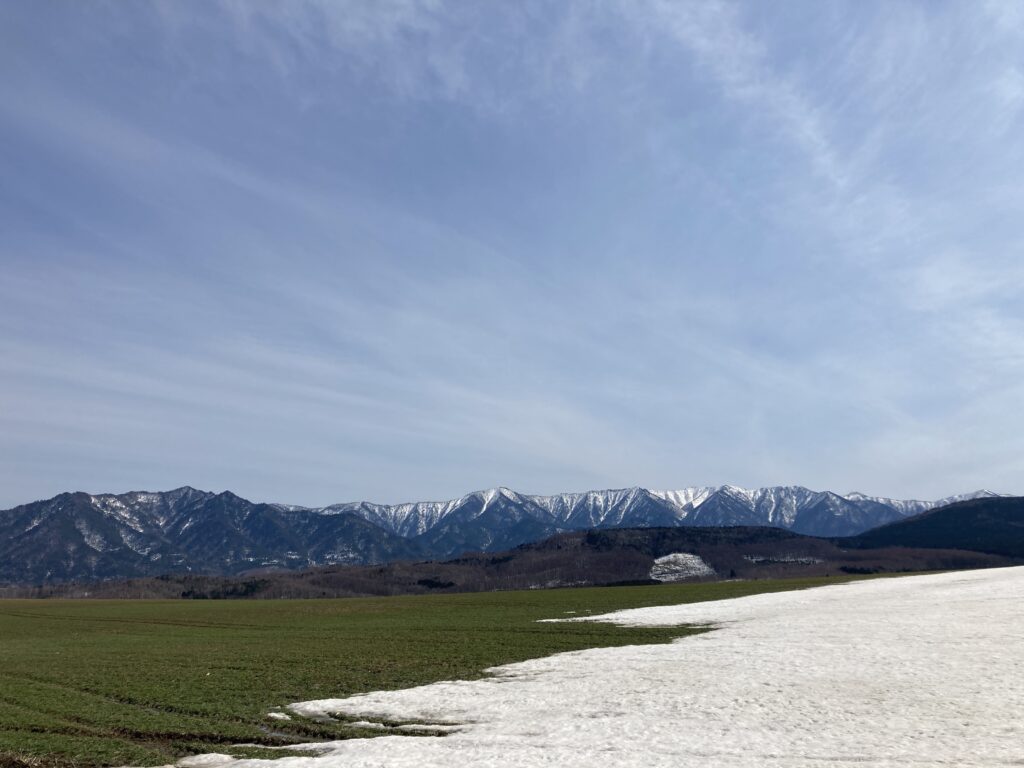
I had planned to stop here again this day, but there was still some time left, so I drove a little further and entered PippuFrom here on, it’ s my usual territory. More and more people, more and more buildings, and it doesn’t feel like a “trip” to me anymore..
After a quick drive through the crowded city of Asahikawa, I reached sunset in Fukagawa, and the trip ended as the sun went down for the day.
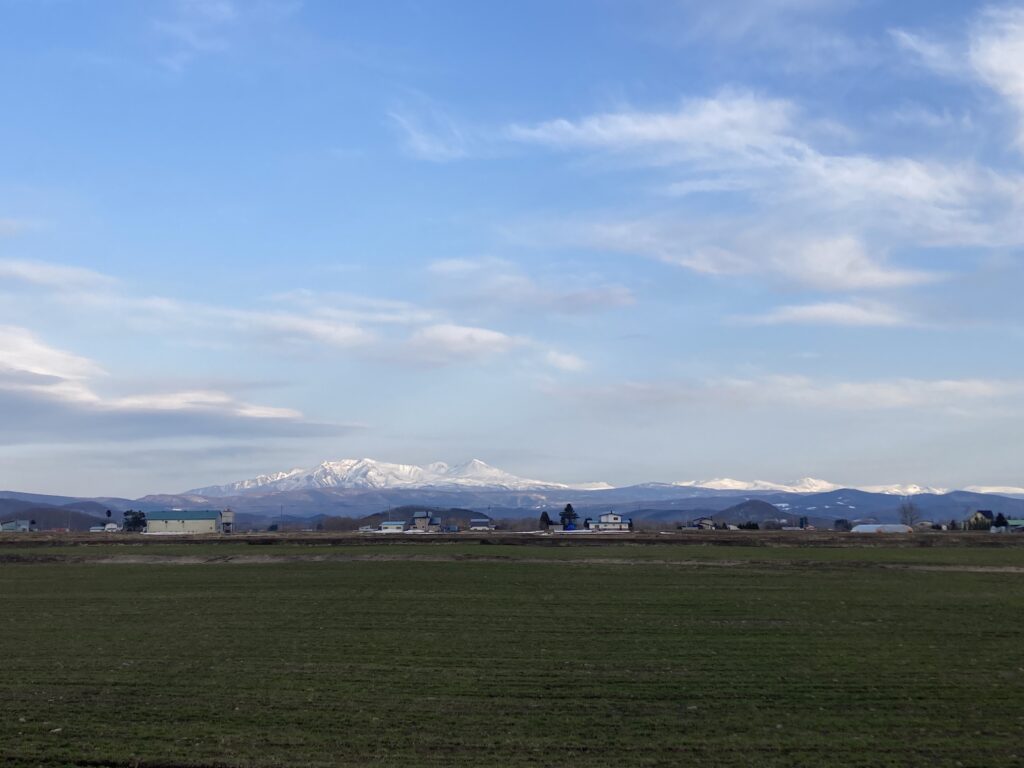
I woke up in the car when it was getting light outside and started moving in search of the sunrise as usual this morning. I drive along, admiring the sunrise. The Ishikari River flows prodigally, and waterfowl talk. The morning sun illuminates the surface of the river. What a beautiful way to start the day…
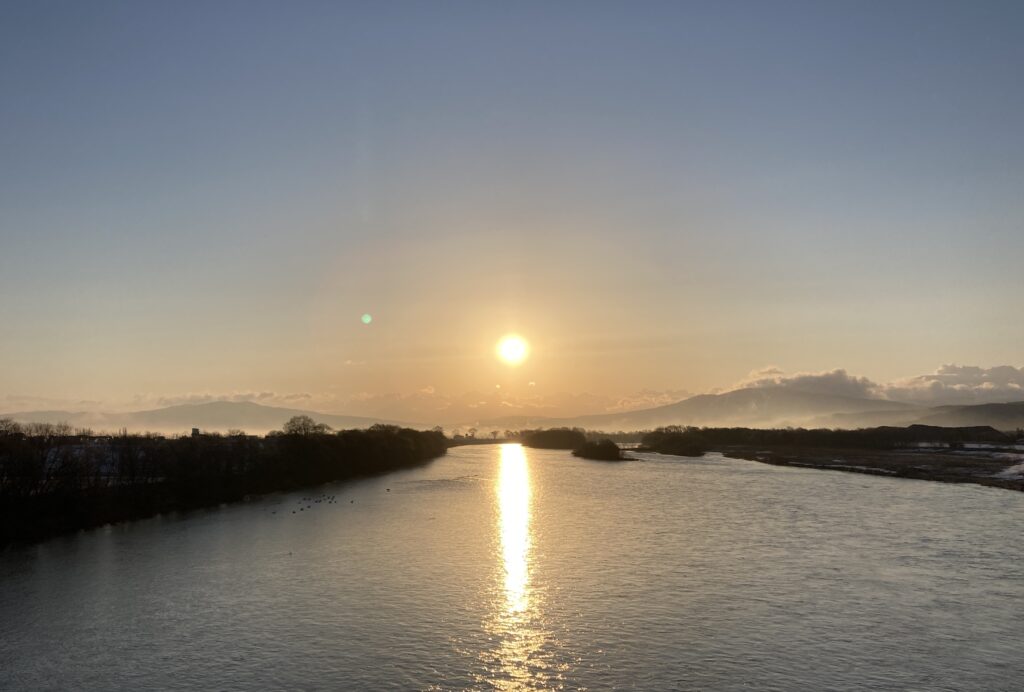
Now that I’ ve been to most of the areas I wanted to see on this trip…
As I continued to gaze at the beautiful mountains of East Hokkaido, my desire to ski grew.
From this day on, the weather would be back to winter, cold and snowy.
I’ ll have to go back to Sapporo to get ready for the fine weather after the snowfall.
However, it was no fun to go straight back to the area I knew, so I chose to drive towards Mashike, which I had never been to before, and head south along the coast. However, as soon as I started running, the gas light came on…. It’s about 65km to Mashike, so I could just about make it. It should be…
I’m heading west with the morning sun on my back. Looking ahead, it was clear in the east and north, but there were thick clouds covering Mt. Shokanbetsu where I was heading.
And then I went into the clouds. Looking at the outside world from underneath the clouds, it’s exceptionally beautiful.
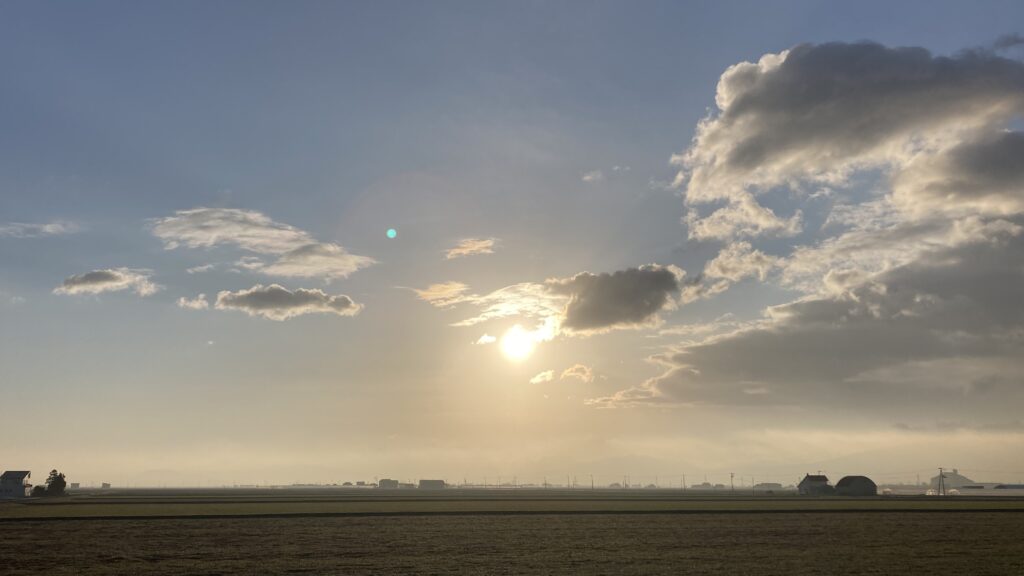
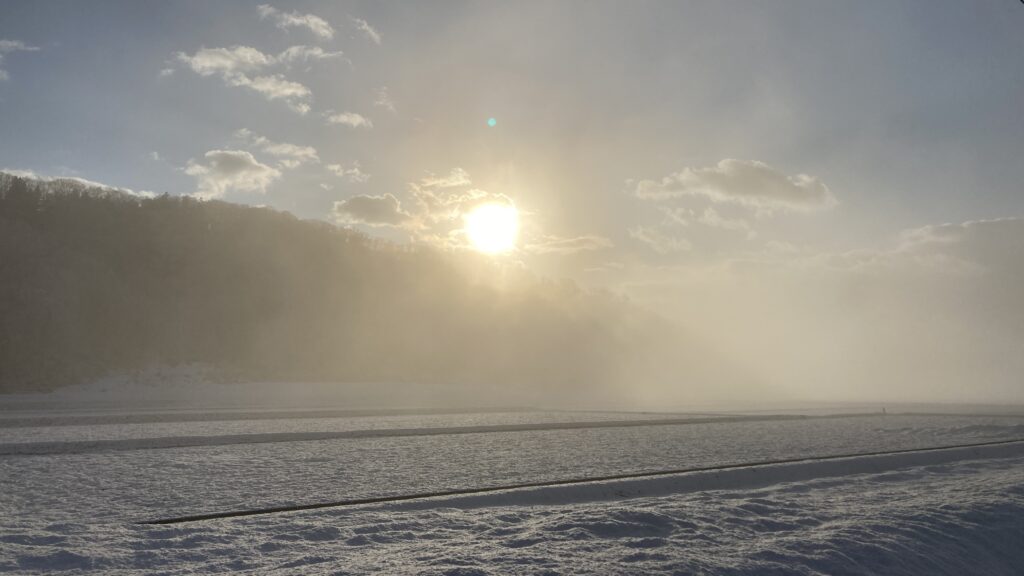
A snowstorm started after I crossed the Goryo Pass. The gas gauge had already gone below the empty line. I tried to avoid stepping on the gas pedal as much as possible on the descent over the pass, and managed to reach Mashike town.
First things first, fuel up! I went to three small gas stations in a small fishing town, but it was early in the morning and none of them were open yet. This was no use. I couldn’t move any further, so I spent about an hour looking at the sea and drinking coffee.
But this is also a very good time.
In the meantime, a tremendous snow cloud passed by. The snow cloud dropped hailstones of about 6 to 8 mm in diameter, and it went by with such a bang that I thought it would break the windshield of my car. The hail was so heavy that I thought it would break my car windshield.
Finally, I refueled at a gas station that was open and departed.
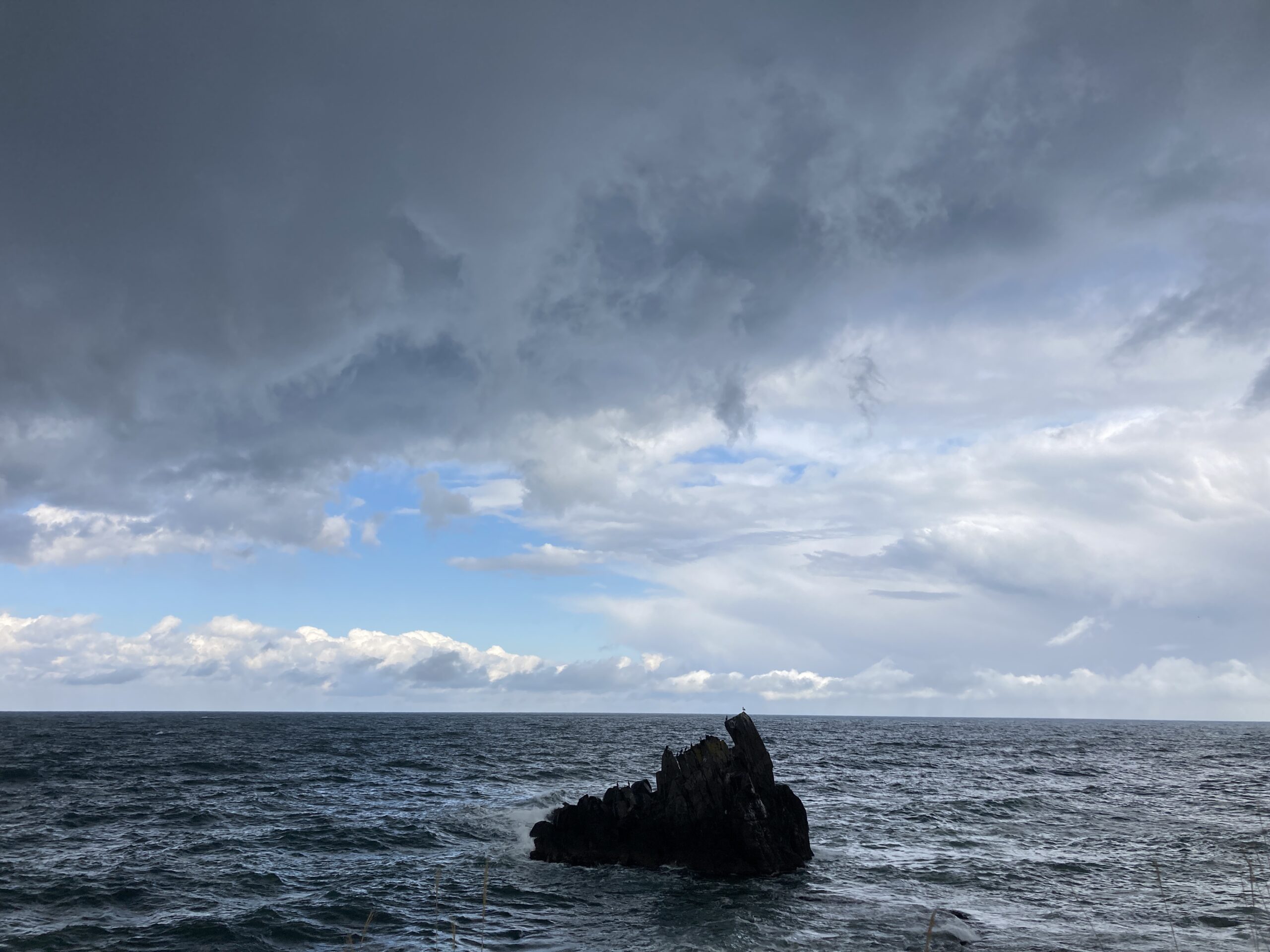
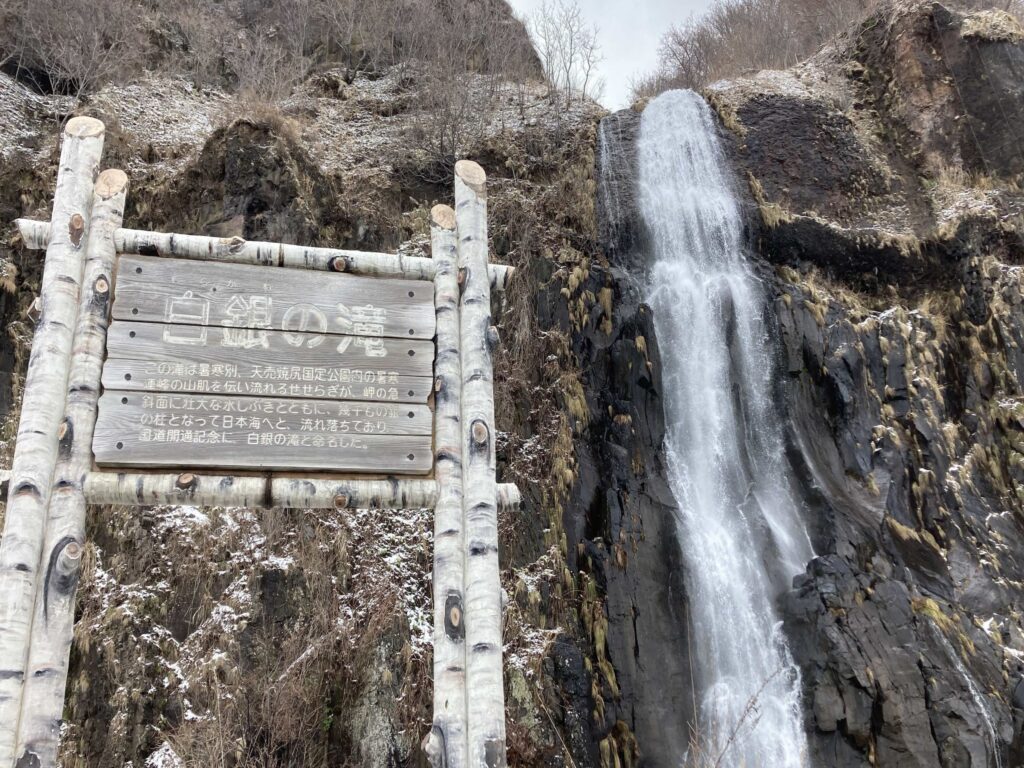
Oh! It’s getting clearer!
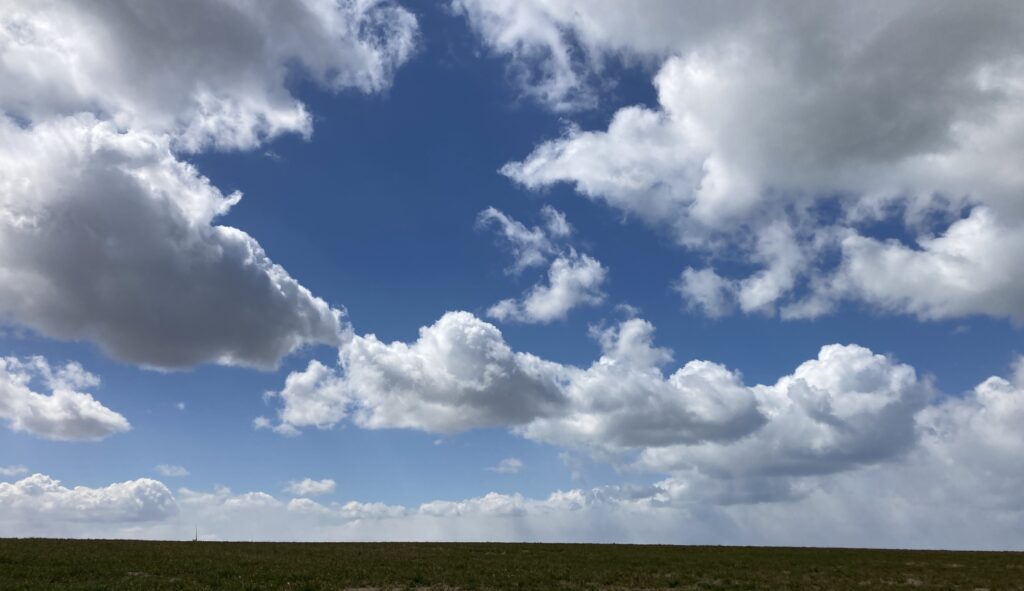
After the snow clouds had passed, I could see the magnificent scenery typical of Hokkaido. However, there are still a few strong snow clouds mixed in, and some of the clouds are probably snowing underneath.
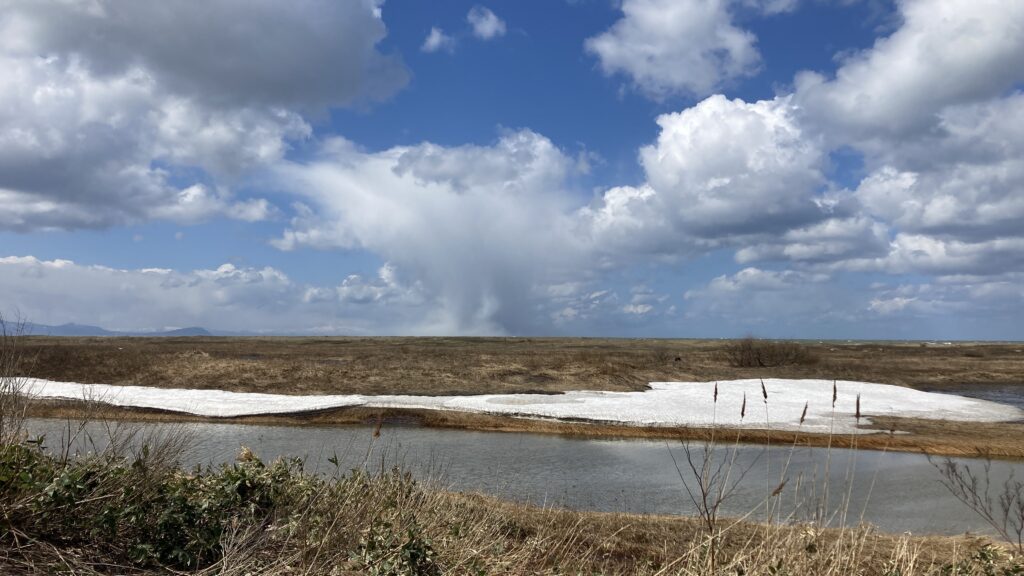
It’s definitely raining only under that cloud right now!
Although I experienced such a change in the weather until just before entering the city of Sapporo, I arrived safely, bringing the Spring 2021 “Solo East Hokkaido Wanderings” to an end.
Hokkaido has a truly wonderful balance between the city and nature.
Once you step out of the city, you are immediately greeted by the great outdoors.
This time I visited Hokkaido in the season between winter and spring, the season when Hokkaido is at its loneliest. There are certainly many wonderful sights that can only be seen at this time of year, but at the same time, I strongly felt that I would like to come back when the weather is a little warmer and the greenery is blossoming. Hokkaido and the eastern part of Japan are about to welcome the full-blown spring season. I strongly recommend you to visit at least once!
And even though I called it a “season-ending trip,” my friends and I went on a “final” four-day ski trip to finish up my life in Hokkaido this year!
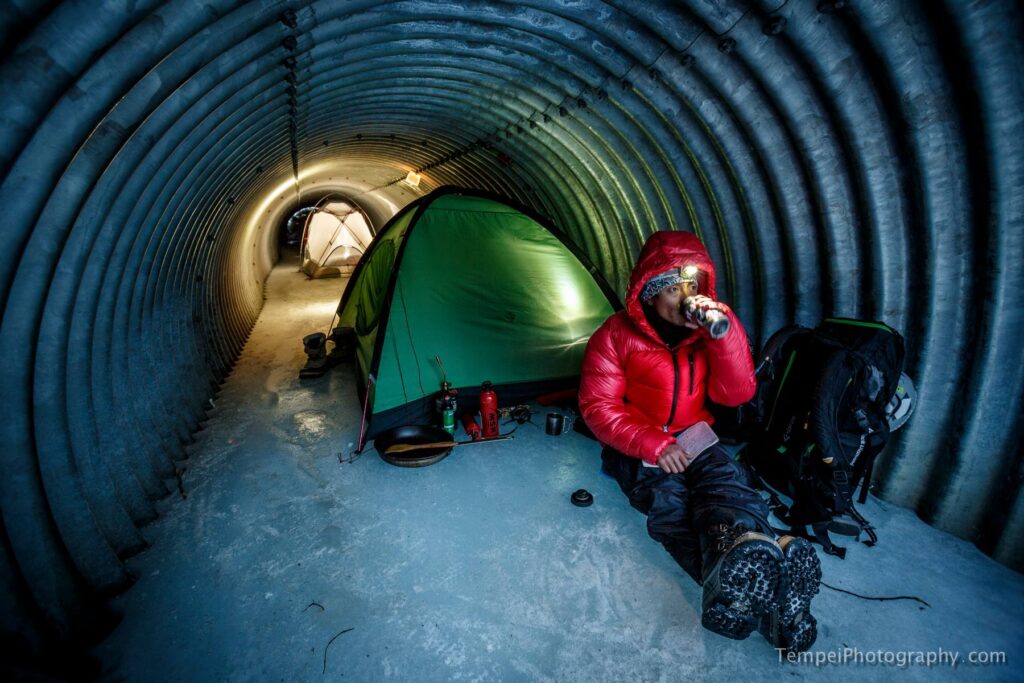
Riki Nakajima
Blog:https://ameblo.jp/rikistyle/
Instagram:https://www.instagram.com/rikinakajima/
Guide Company HP for Winter :https://rikijg.com/jp/
Guide Company HP for Green Season :https://www.rikijapowguide.com
Born in Shiga Prefecture in 1981. While studying in Whistler, Canada, he became a certified CSIA instructor and the first Japanese freeski instructor to receive the CFSA freeski instructor certification. After returning to Japan, he expanded his activities to include backcountry skiing in addition to participating in numerous freeskiing competitions. For the past few years, he has been working at Tomamu Ski Resort in Hokkaido, giving ski lessons, guiding, managing events, and acting as an MC. He also travels abroad every spring to try his hand at high adventure mountain climbing, and expresses his experiences through videos, photos, and events. He is the representative of the guide company “RIKI JAPOW GUIDE”.